Glossary
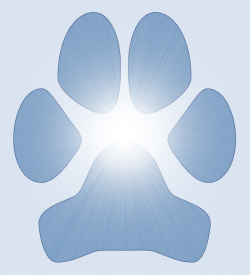
Gait
The pattern of movement of animals during (terrestrial) locomotion.
Gaits used by cats and dogs include the walk, the amble, the pace, the trot, the canter and the gallop.
Gaits used by cats and dogs include the walk, the amble, the pace, the trot, the canter and the gallop.
Fault
A characteristic of a pet that deviates from the breed standard.
Breed standards specify characteristics that are undesirable, some being disqualifying faults.
Breed standards specify characteristics that are undesirable, some being disqualifying faults.
Trot
A symmetrical, two-beat gait in which diagonally contralateral limbs move in unison.
This is an endurance gait, which allows coverage of ground at a reasonable speed but without expending maximum energy. The trot may, therefore, be maintained for hours.
This is an endurance gait, which allows coverage of ground at a reasonable speed but without expending maximum energy. The trot may, therefore, be maintained for hours.
Forefoot
The foot of a cranial (anterior or front) limb.
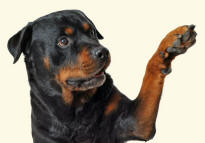

Central Line
An imaginary line along the direction of travel.
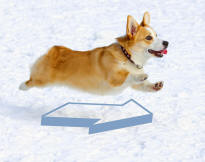

Hind Foot
The foot of a caudal (posterior or rear) limb.
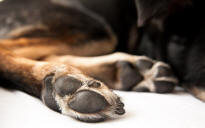

Hindquarters
The hind region of the dog, from the loin.
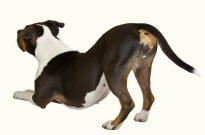

Overreaching
When describing a fault of gait, overreaching occurs when hindquarters are stronger and more angulated than the forequarters, giving rise to an excessive reach of hind limbs.
In some instances, this may cause hind feet to interfere with forefeet.
Alternatively, overreaching may cause the animal to adopt undesirable compensatory action.
In some instances, this may cause hind feet to interfere with forefeet.
Alternatively, overreaching may cause the animal to adopt undesirable compensatory action.
Hock
The tarsal region or tarsal joint of the hind leg of a quadruped.
Also known (colloquially) as the heel or ankle.

Also known (colloquially) as the heel or ankle.







